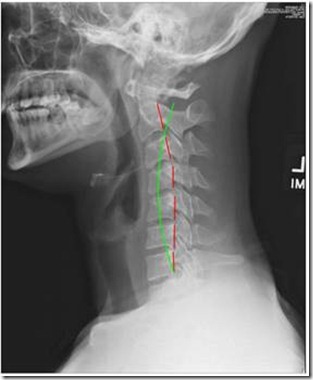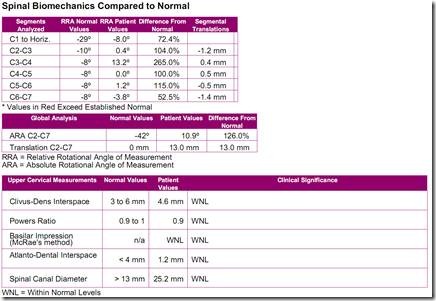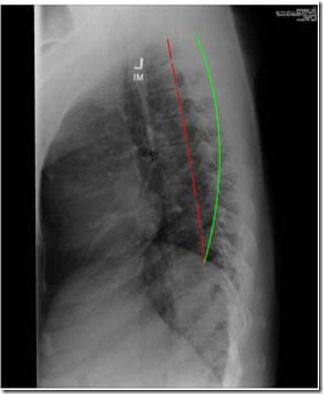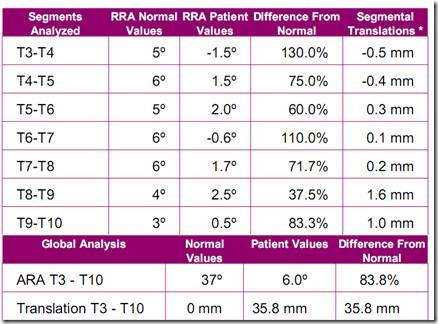PostureRay: Mirror Image® Traction Links Here We Come!
 Monday, April 12, 2010 at 11:27PM
Monday, April 12, 2010 at 11:27PM Joseph Ferrantelli, DC
Private Practice New Port Richey, FL
CTO, CBP® Seminars
CEO, PostureCo
Many Chiropractors have successfully begun using PostureRay®in their practices and have provided us feedback on how it has aided in growing the practice by reducing the time for objective and reliable x-ray analysis, as well as generating patient friendly Report of Findings marketing materials, not to mention the multifunctional digital view box.
Well now we have some more exciting news! We have just begun the process of programming the most requested of additional modules, that being, linking a patient’s x-ray findings with mirror image® traction protocols and set up procedures. This module will be aimed at reducing mistakes in traction selection when considering the all pertinent x-ray biomechanical findings. For example, occasionally we receive calls from Chiropractors to our CBP hotline where they have pursued traction treatment for a patient with a cervical kyphosis, adjusted them, and exercised them, all with only minimal improvement in their post x-ray findings. Now to a less experienced structural based doctor, one might jump to the conclusion that CBP methods have failed. However, more often than not, it was merely an incorrect mirror image traction setup for the patient, or worse yet, the wrong traction method may have been administered.
Consider the sagittal cervical spine as an example where many patient cases have altered thoracic alignment coupled with the abnormal cervical lordosis. Mechanically, the subluxated thoracic kyphosis would change the choice and set up for the patient’s cervical spine traction. Unfortunately, many chiropractors do not routinely obtain lateral thoracic x-rays which would limit the chances for the patient’s success. There are at least 16 categories of abnormal cervical curvatures encompassing the type upper thoracic kyphosis and the type of sagittal plane head posture. In relationship to these categories there are 4 -primary types of in office CBP Traction equipment with each having several types of possible setups specific to the curve and posture. Furthermore there are now 3 types of viable home traction units. Thus, choosing the appropriate mirror image traction application type and setup for a specific lateral cervical subluxation is not a 'simple task'.
Consider the case in Figure 1 (lateral cervical) and Figure 2 (lateral thoracic). Looking at the cervical curvature we can identify:
· A straightened lower cervical lordosis with a ‘flattened’ or near vertical C7-T1 posterior vertebral body alignment,
· A cervical kyphosis from C2-C5 segments—mid cervical kyphosis if you will,
· A numerical value of C2-C7 anterior translation is found and seen, however, this is not true head translation. The reason C2 is anterior to C7 is due to the cervical kyphosis from C2-C5,
· There is a mild flexion of the skull on the atlas.
Now, looking at the thoracic curvature we can identify:
· Anterior translation of T3 relative to T10,
· A nearly straight thoracic kyphosis showing an 83.8% reduction in curvature.
Clinical Questions Concerning This Case:
1. What is the appropriate type of cervical curve traction to be used in the office?
2. What would the exact setup look like for this type of in office traction?
3. What is the appropriate type of home orthotic traction to be administered in this case?
4. What would the exact setup look like for this type of home orthotic?
Solutions
In the near future, PostureRay will be able to guide you to the likely most appropriate traction types and setups. In cases like these, the treating Chiropractor can become frustrated, especially in higher volume settings, and worse yet - the patient may remain subluxated due to ineffective interventions. The result may be that the patient and doctor are left believing chiropractic may not be able to ‘correct’ their condition and that only symptomatic care is appropriate.
With this new module under development, under direction of Dr. Deed Harrison, we aim to remove as much guess work as possible, suggesting better set up protocols with both angles of pull, patient positioning, and of course, choice of appropriate traction methods based on patient specific x-ray analysis, conditions and symptomatic ailments.
Look for this additional module to become available towards the end of this year!
If you have questions about how PostureRay can help your practice, feel free to visit our website atwww.postureco.com or email us at sales@postureco.com or direct questions to myself atdrjoe@idealspine.com. Always remember, a digital x-ray machine is NOT required to utilize PostureRay®.
 CBP Seminars | Comments Off |
CBP Seminars | Comments Off | 







